Continuing the TCN close up look at 25 Things to Know about Croatia on June 29, 2016, Filipa Marusic takes us to th UNESCO World Heritage Site of the old town of Trogir.
A UNESCO World Heritage Site, the Little Venice of Dalmatia or as some call it The Stone Beauty – Trogir and its surrounding area featuring island Čiovo. The islet where Trogir is located lies in a narrow sea passage between the mainland and Čiovo. The islet itself is just 500 m long and 250 m wide. The highest point is the tower of Saint Lawrence Cathedral at just 47m. It is in close vicinity with the airport and city of Split, and its cultural heritage combined with nautical its importance has made Trogir one a deservedly well visited destination. This article will look into 25 things you should know about this charming town.
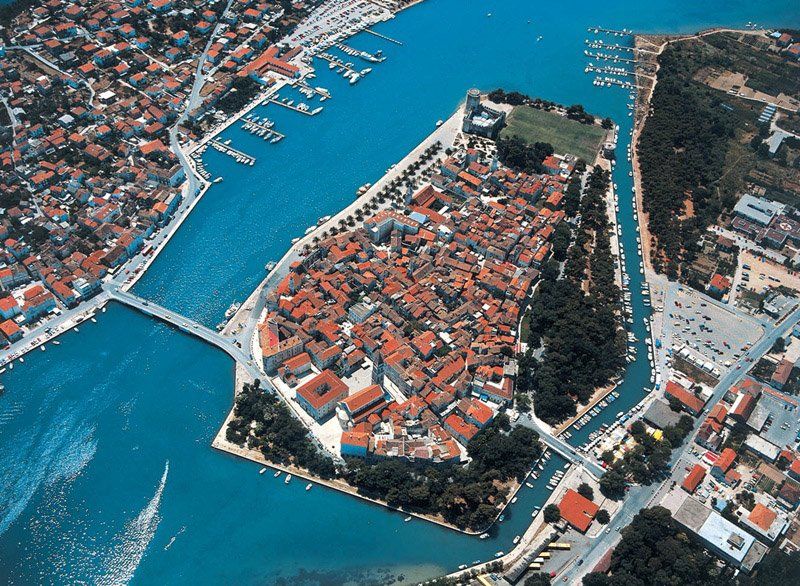
1.UNESCO protected medieval city centre
Trogir presents a good example of well-preserved Romanesque-Gothic islet town. It has long lasting urbanistic consistency which goes all way to its Hellenic heritage with its octagonal city shape. During different periods of rule it was redesigned according to the architectural trends of the time, ranging from Romanesque and Gothic to Renaissance and Baroque. UNESCO recognised its value in 1997 and listed Trogir as a World Heritage Site. Trogir is sometimes called a city-museum because of its rich cultural heritage and intact authentic architecture. In order to celebrate its Medieval heritage, Trogir has in last few years started to organise an annual Medieval fair.

2. Trogir – the goat town
The origin of the name Trogir dates back to the 2nd century BC. All variations of the names are related to different legends of the founding of the city.
There is one saying the antique name Tragurion is the name for older Illyrian village meaning three stones in Albanian, and this is based on a local story that Trogir was built on a foundation of three stones.
Another name explanation comes from the Greek words Tragos meaning goat and Oros meaning hill. The literal meaning was 'goat hill' and was related to nearby Kozjak mountain, but it also can be explained by Trogir being mostly a goat-herding area.
During the first century BC Trogir got its Roman name Tragurium, and with the arrival of Slavic nations in the seventh century, it was changed to Trogir.
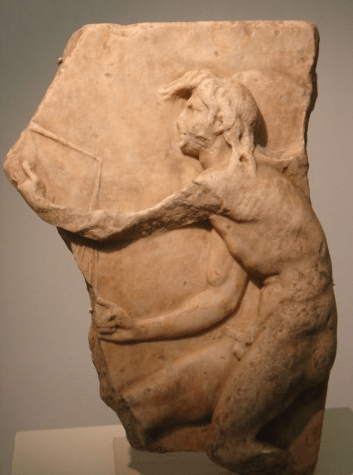
3. Kairos - the Greek god of the happy moment
Kairos is the god of the happy moment and one of the main sights in Trogir. The Kairos relief dates to the third century BC and can be found in Trogir in an abandoned house. After its discovery, it was kept in the Benedictine monastery next to the church of St Nikola, and it is the oldest piece of the Kairos collection which can be visited in the museum. The legend says Kairos is faster than the wind and is hard to catch him by the tuft on his head. If you succeed in doing so, you will grab your lucky moment and will have happiness throughout life. In case you miss him, he will continue to flow along the stream of happiness and you will miss your lucky moment. This presents the allegory of the happy moment or being in the right place at the right time – if you miss the opportunity or a lucky moment it is unlikely you will have the same chance again, and happiness might slip through your hands.
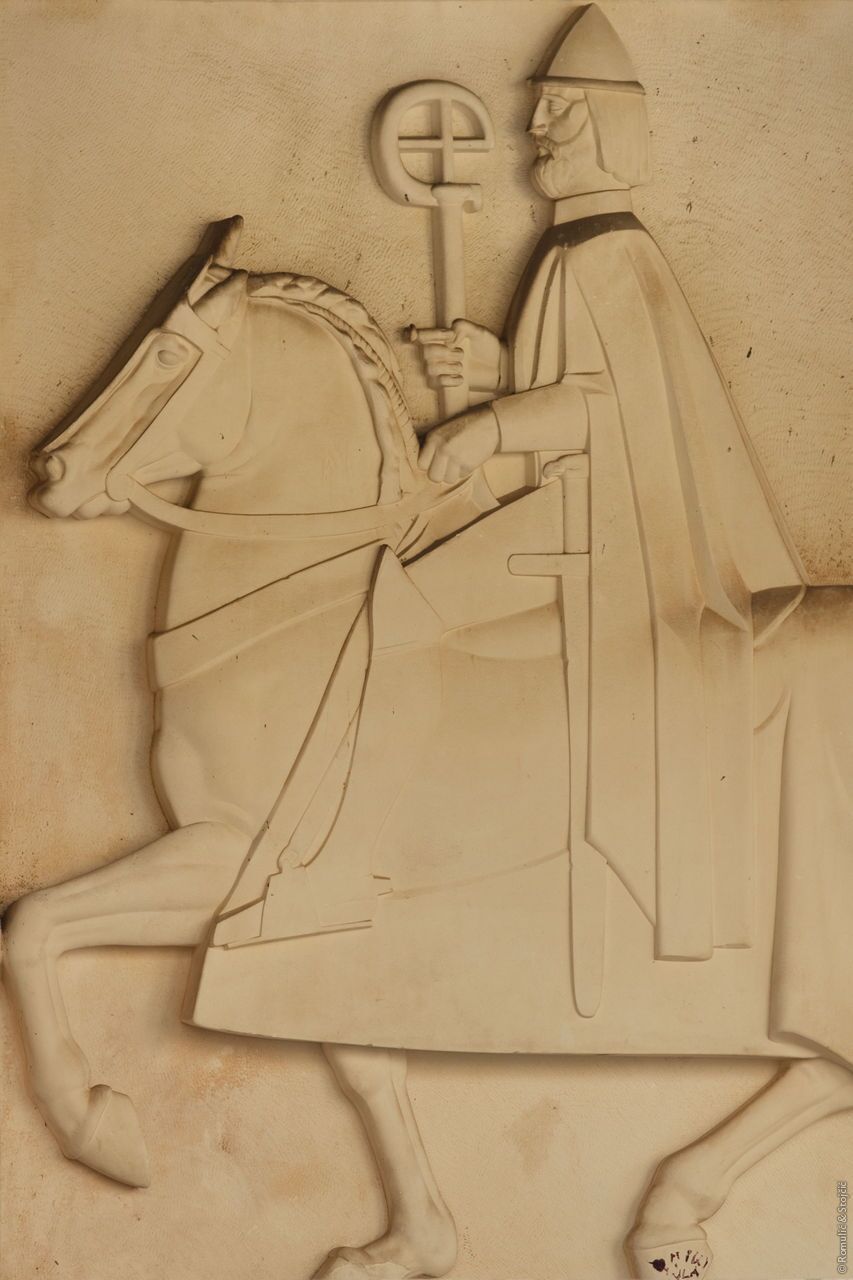
4. Important artists and public figures related to history of Trogir
Trogir was the hometown or place of residence for historically important people.
Firstly, there are renaissance artists who were important for creating the architecture of Trogir as we know it today. Nicola the Fiorentin, student of Donatello, a famous builder and sculptor was invited by Koriolan Ćipiko, and his work can be seen on St. Johns chapel, Ćipiko palace and City loggia. Alesi was also an artist who left his trace in Trogir architecture – he was working with Juraj Dalmatinac (builder of Sibenik UNESCO protected cathedral) and Nicola the Fiorentin. Trogir locals, Ivan Duknović, Ivan Budislavić and Blaž Jurjev Trogiranin left some valuable art too in their home town.
Trogir was the hometown of Croatian duke Petar Berislavić, who was well known for his fight against the Turks and Venetian rule. The founder of modern Croatian historiography, Ivan Lucić was from Trogir and wrote different works on Croatian history.
More recent public figures from Trogir include a singer with a magical voice, Vinko Coce, who recently passed away. He sang about Trogir and Hajduk and he was often called the Croatian Pavarotti or “Trogir nightingale”.
Boris Burić Gena – a famous tailor well known for his ethnic, custom-made suits has his workshop in Trogir old town. Some of the Gena clients include Bernie Ecclestone, Sebastian Vettel, Goran Ivanišević. One of his traditional, tailor-made suits was a gift for US president Barack Obama. If you want to suit up – look for the studio in Ribarska 6.
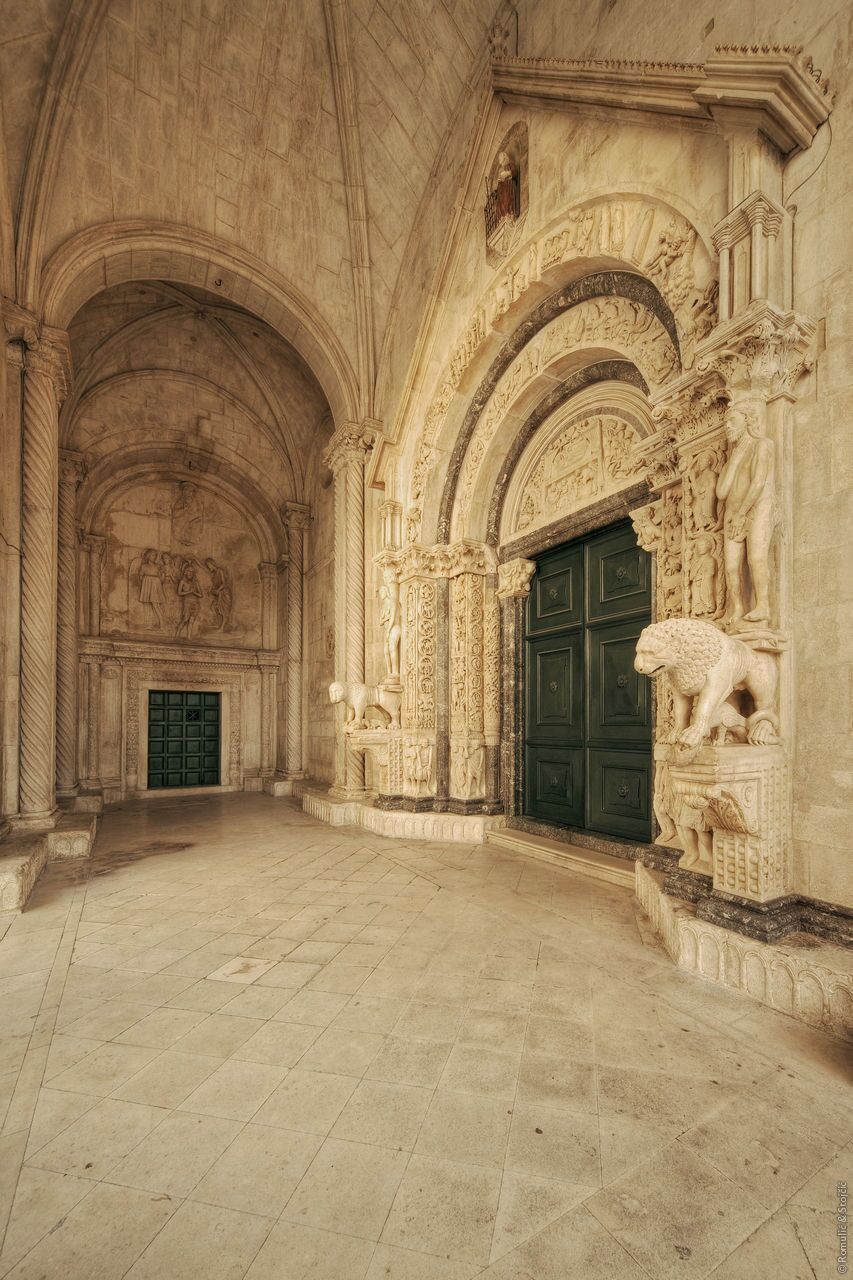
5. Radovan portal
Portal of Radovan is the most valuable monument in Trogir from Romanesque times and is one of the most important monuments of this art period. The portal was finished in 1240 and is 50% work of Radovan and 50% work of his students. The portal presents different scenes from actual life, different seasons of the year and scenes from the Bible. Two lions on each side present the symbols of power and strength. Each side of the portal has different Bible motifs but also events from that time, such as images of the Saracens who attacked Trogir in the twelfth century. Its complexity and art value has made it one of the most recognisable sights in Dalmatia.
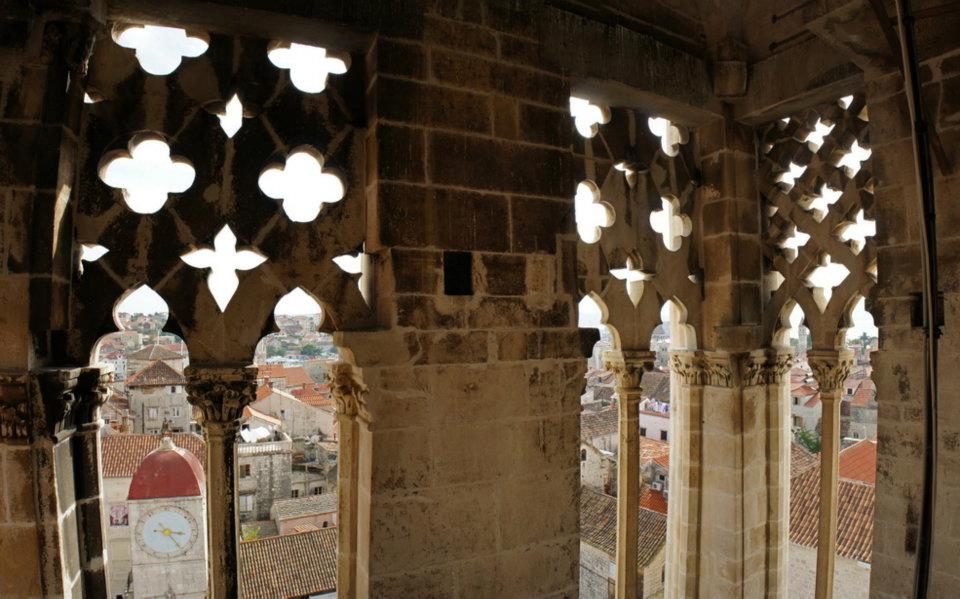
6. St. Lawrence Cathedral
One of the most visited sites in Trogir is St Lawrence Cathedral. It took more than 4 centuries to build, and the change though the periods can be seen best on the cathedral tower from where you can enjoy a view on the central city square. The cathedral is the work of different artists, and its base was probably an older basilica before the Saracen rampage. The official construction stated in 1213. and is a Romanesque gothic basilica. Apart from the Radovan portal, which is an exquisite work of art, other valuable works are the chapel and baptistry of St. John, another Trogir patron saint. The legend says St. Lawrence during his martyrdom said to his torturers “I’m well done, turn me over” and because of this he is the patron saint of the chefs and comedians.
7. Trogir palaces in the city centre

Trogir had numerous noble families who built their palaces and were often connected to Venetian rulers. Here we will present you several valuable palaces in Trogir old town:
Ćipiko palace
Opposite Trogir cathedral, Palace Ćipiko is located and presents a range of several buildings connected in one. The oldest parts date to the early Medieval age with some parts from ancient times. The biggest makeover for the palace was in the fifteenth century when humanist and writer Koriolan Ćipiko hired the biggest artists of the age, such as Nicola the Fiorentin, Andrija Alesi and Ivan Dunković to work on it. The palace has gothic ornaments and a monumental courtyard.
Small Ćipiko palace
Small Palace Ćipiko is located opposite the city loggia. Similar to large Ćipiko palace it has its recognisable image from the fifteenth century and has strong renaissance characteristics.
Garagnin Fanfogna palace
This late baroque palace has a rich library heritage and is home to the Trogir city museum.
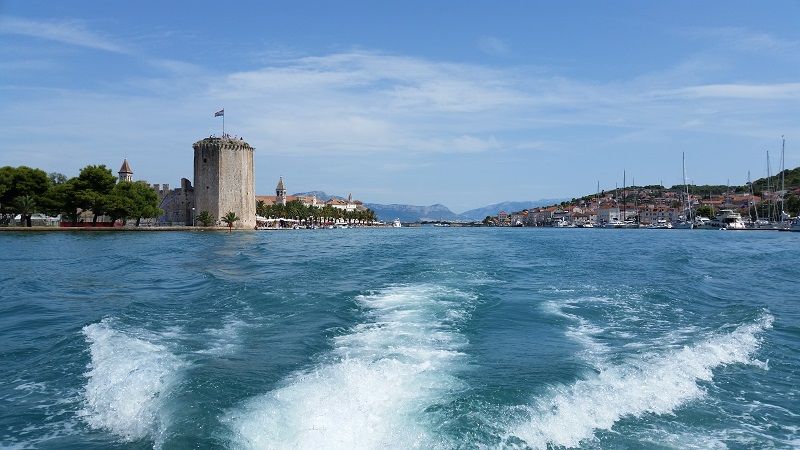
8. Forts of Trogir – Kamerlengo and St. Marko
Kamerlengo fortress got its name from the city treasurer and got its recognisable image during Venetian rule. The walls are located in the south-western part and it was built from 1420 to 1437. Its main purpose was to accommodate the Venetian army fleet. Nowadays it is a unique location for the different events and concerts. One of the coolest festivals lately, Moondance festival, recently featured on Forbes list of top 7 European festivals is also taking place in this historical fortress.
Not a concert destination as Kamerlengo, but a home to Dalmatian music, St. Marko fort was historically important for the defence of Trogir and here one can find Venetian heritage.
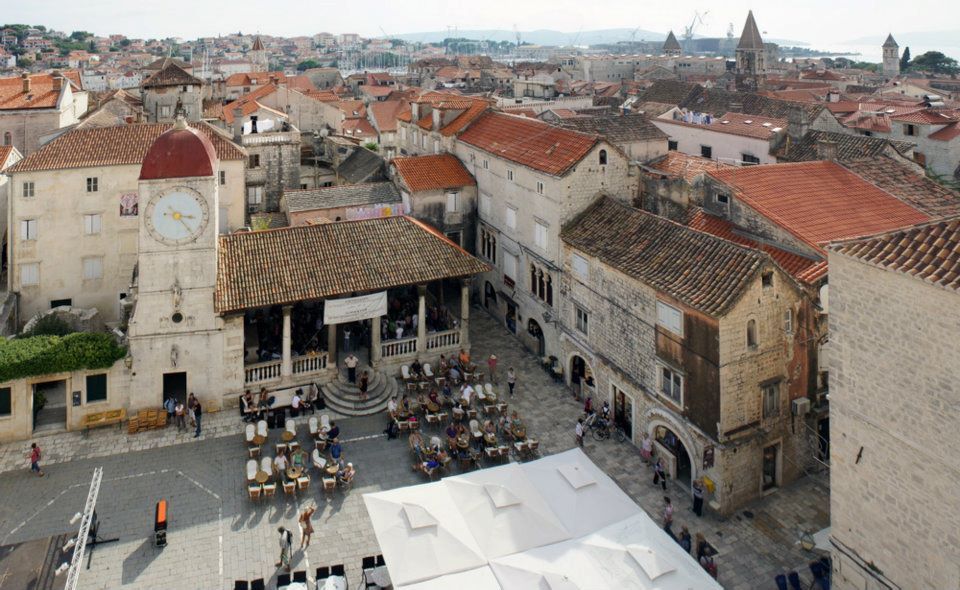
9. City loggia
The porch or loggia in the main Trogir square got its recognisable form in Renaissance times. Loggia was used as a public property, as a hideaway and a court room. Over time, it has also been used as a place for different negotiations and as a sales location. Finally that was the place where the duke would speak to the people. It served a purpose as temporal custody for petty criminals. Interestingly enough, women were forbidden from entering the loggia. The central part was occupied by a lion symbolising St Marco, who is the patron of Venice. During the Second World War this lion and all the lions found in Trogir city centre were removed as fascist Italy said wherever you find a lion there is Italy – locals stood against this and removed all the Venice symbols. The southern part of the loggia has the Ivan Mestrovic relief which shows the duke Peter Berislavic. There are numerous emblems of noble families from Trogir.
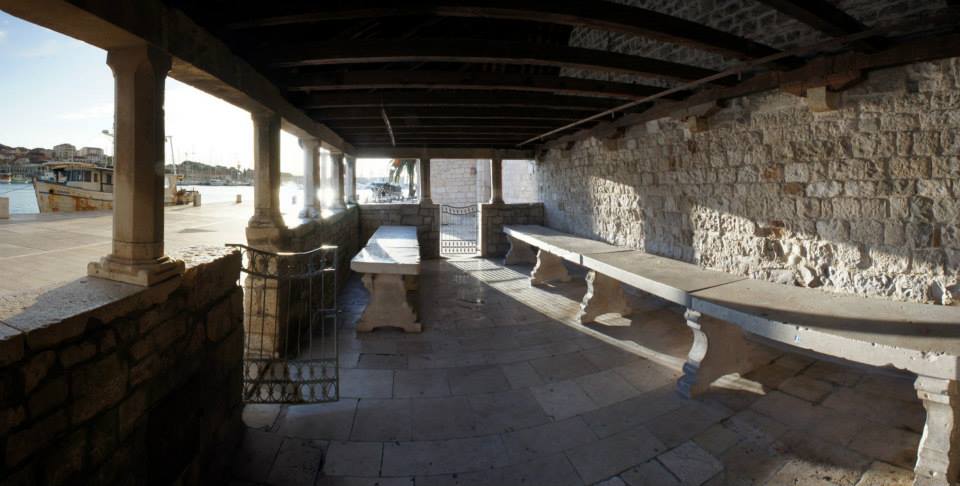
10. Small loggia
During history it was better known as a resting area for travellers who were late before the closing of the city gates. It was built as a Renaissance loggia next to the southern walls of Trogir which house the best preserved part of the old town. There is the writing on the wall describing its purpose – it served as a tent to keep the sun away and shelter from the wind for all people of Trogir and those who were visiting. This loggia was used as a fish market at the beginning of the twentieth century, and nowadays it is place where you can find different souvenirs.

11. The City Hall - the Duke's Palace
City Hall, or the Duke's Court, was first mentioned in the thirteenth century and was the centre of political power in Trogir and a place for different public discussions. Mostly built in the fifteenth and sixteenth centuries, it has kept the same purpose until today as an administrative centre. During history it was also a place for theatre where different royal families had its emblems marking their spots in the theatre. During the reconstruction in the 1930s, all emblems were taken down and engraved on the city loggia.
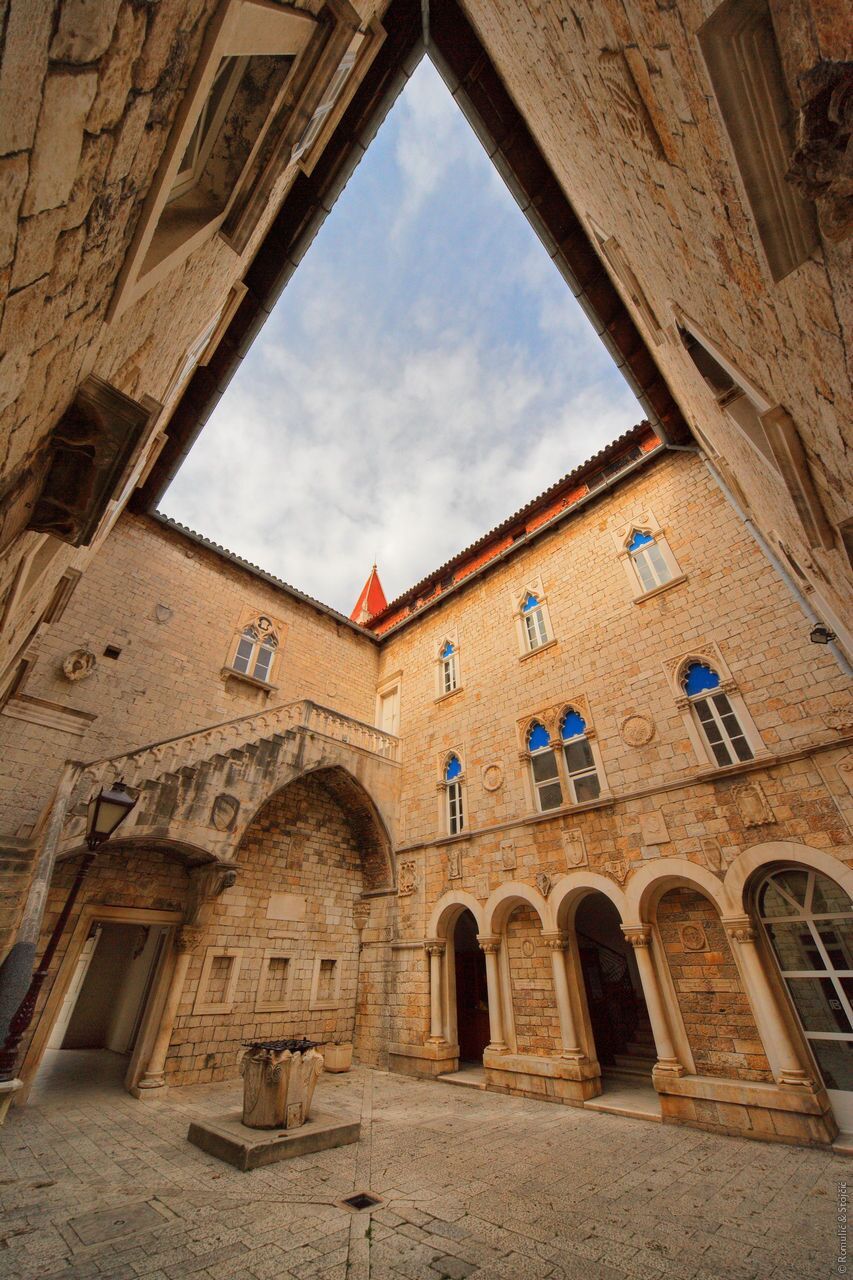
12. Range of old wells
There were up to 50 old wells in Trogir. They were used as sources of water for the local residents. The drinking water was taken from underground sources connected to Pantan river sources. One of the remaining wells is kept in front of the city hall. Most of the preserved wells have different ornaments and emblems of different noble families.
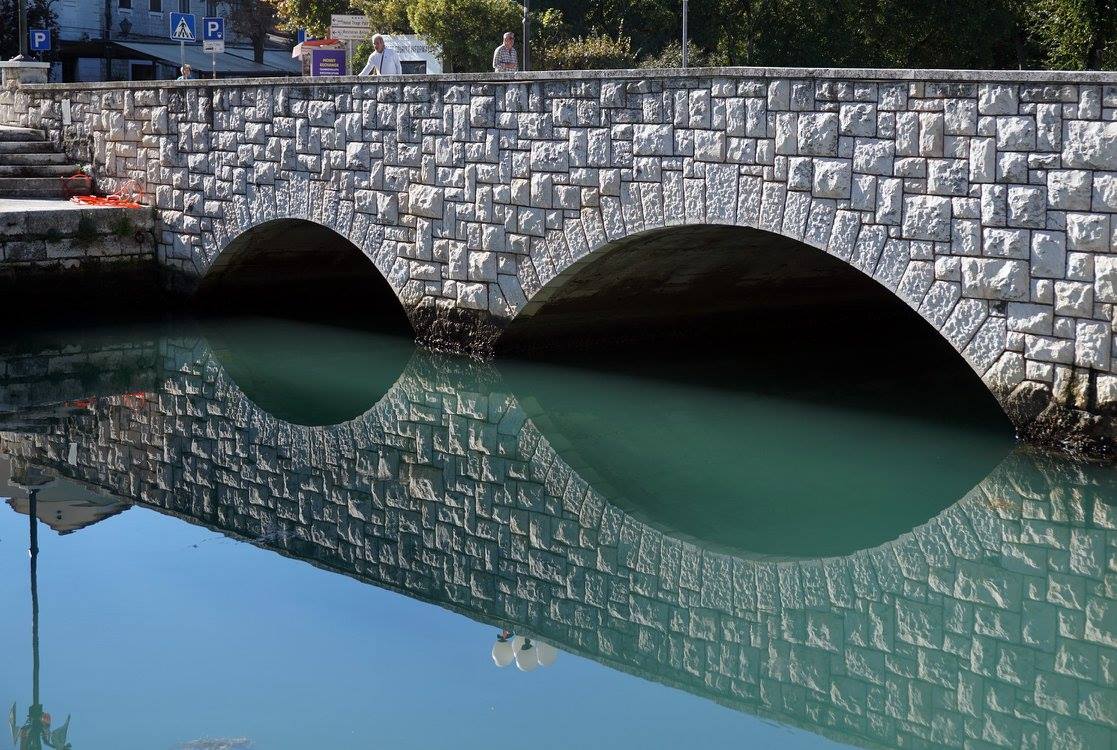
13. Story of Bela the IV and his hideaway in Trogir
One of the well-known Hungarian Croatian rulers, Bela the IV. who was important in Croatian history, was looking for a hide away from the Tartars in the thirteenth century - first he went to Klis and then Trogir. To hide from the Tartars he hid on Čiovo and then on a small island Kraljevac named after him. He left his trace in town by digging out the canal around the town in order to stop the Tartars from invading Trogir. He also gave away the property in Trogir area to the locals and presumably a part of his cloak.

14. First pharmacy in Europe
Trogir, thanks to its long lasting urban heritage, was also the town which had first pharmacy in the Europe. The pharmacy was opened on October 29. 1271. close to the main city square. The proof for this is the original owner’s document, now kept in the Trogir city museum. The first pharmacists were from Italy and in the sixteenth century, and the pharmacy was owned by Mr Seymour, the younger brother of Jane Seymour (one of the wives of Henry VIII.). The pharmacy is not open anymore on the original location but Trogir pharmacies continue to uphold its legacy.
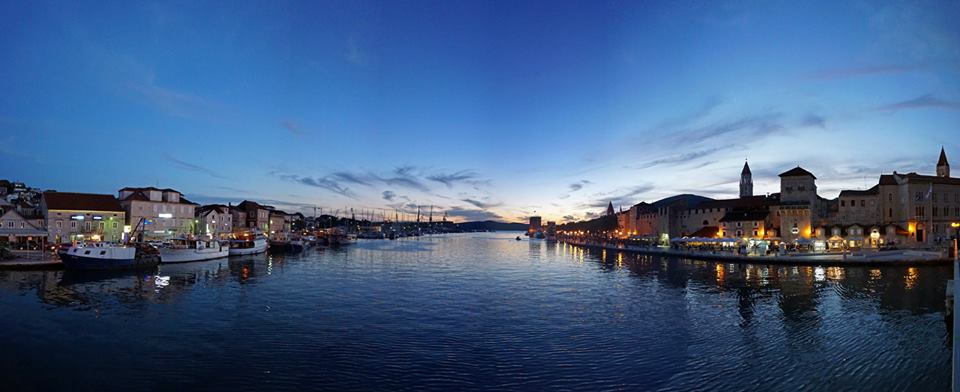
15. Trogir as a film set
Because of its lovely old town area, Trogir was and still is used as a film set for different movies and shows. One of the most notable is definitely the Croatian film called “Kaja ubit ću te” – this famous art film is based on life of a Trogir man it was completely filmed in Trogir and it is a story about peaceful locals’ life interrupted by war. It is one of the valuable works of Croatian filmography. More internationally recognisable is definitely Stealing heaven (1988) when the streets of Trogir were an ideal set for the Medieval twelfth century streets of Paris. Additionally, Orson Welles filmed in 1969. film “The merchant of Venice” which was first aired recently at the Venice film festival in 2015. An Oscar nominated Italian film La strada lunga un anno also used streets of Trogir as its perfect set. These are just some of the film titles filmed in Trogir as the town was set for shows like Winnetou, Doctor Who,Jonathan Strange & Mr. Norrell. More recently Trogir was a filming set for HBO shows – the extremely famous Game of Thrones and the less known DIG, when Trogir was a set for Jerusalem.
A good overview of the close connection of filmmaking and Trogir can be found in the Museum of Trogir series of booklets – Kamera atrAkcija.
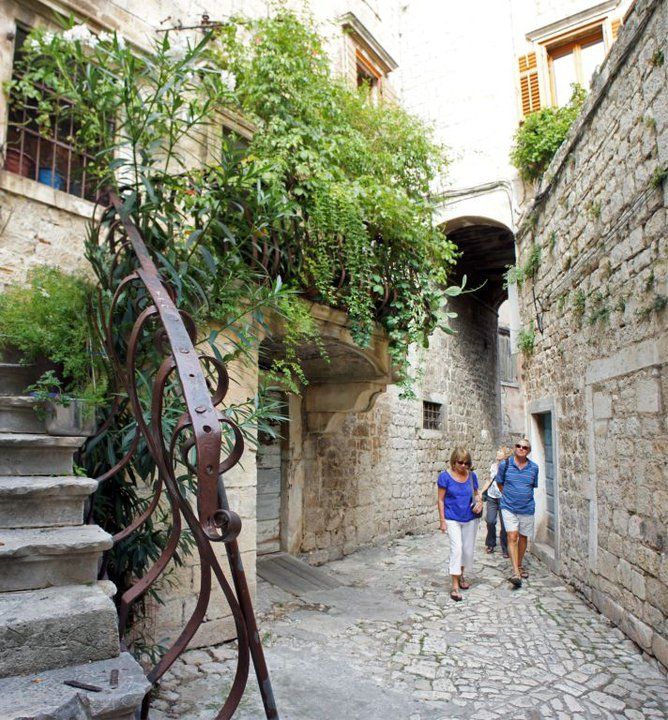
16. Celebrities in Trogir
Trogir is not only attractive as a filming set, but it has been a place to visit and a place to be. Not only a host for different filming crews and actors, Trogir has long been a celebrity destination. Many people know that George Bernard Shaw, Wallis Simpson, Edward VIII and Prince Charles visited Trogir and loved it. In more recent history, Trogir is an annual destination for Bernie Ecclestone and royals like Caroline of Monaco. Trogir presented a place of inspiration for various Croatian artists like Ivan Meštrović and Emanuel Vidović whose numerous paintings were inspired by Trogir.

17. Gastronomic heritage
As with most places in Dalmatia, Trogir is proud of its culinary heritage. With different historical influences ranging from the ancient Greek and Roman to the Venetian and French, Trogir cuisine always had its Mediterranean heritage with different international influences. The famous local dishes range from different fresh fish dishes to pašticada (traditional Dalmatian dish) and traditional pastries – rafioli (often can be found as traditional pastry in other parts of Dalmatia).
A Trogir local, chef Tatjana Ciciliani is the person to ask for the traditional dishes. She was featured in Saveur magazine as the face of Croatian cooking in 2014. Last year she was featured in Andrew Zimmerman’s Bizarre Food episode on Croatia. Saveur magazine was thrilled by her fish stew, and that’s just a small part of the Trogir culinary heritage. The cooking classes in Trogir are held in thirteenth century palace and the secret of the high quality local dishes is always freshness of the ingredients.
You can learn how to cook like a local on this culinary tour.
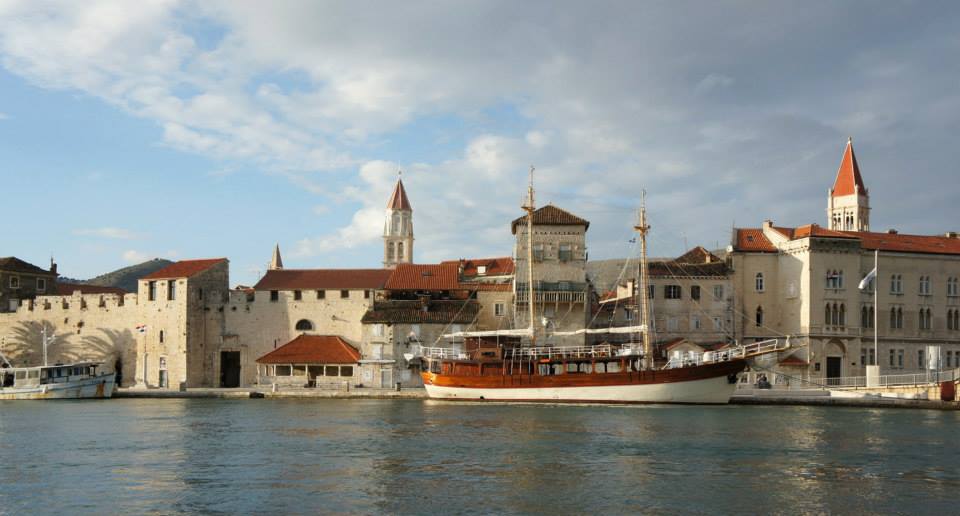
18. Schools with the amazing view
The local children who go to Petar Berislavić primary school, built in 1909., are fortunate enough to have the most amazing view from their classroom – located on Trogir riva – they have the view on waterfront and Čiovo island. This view is one of the most spectacular views in Trogir.
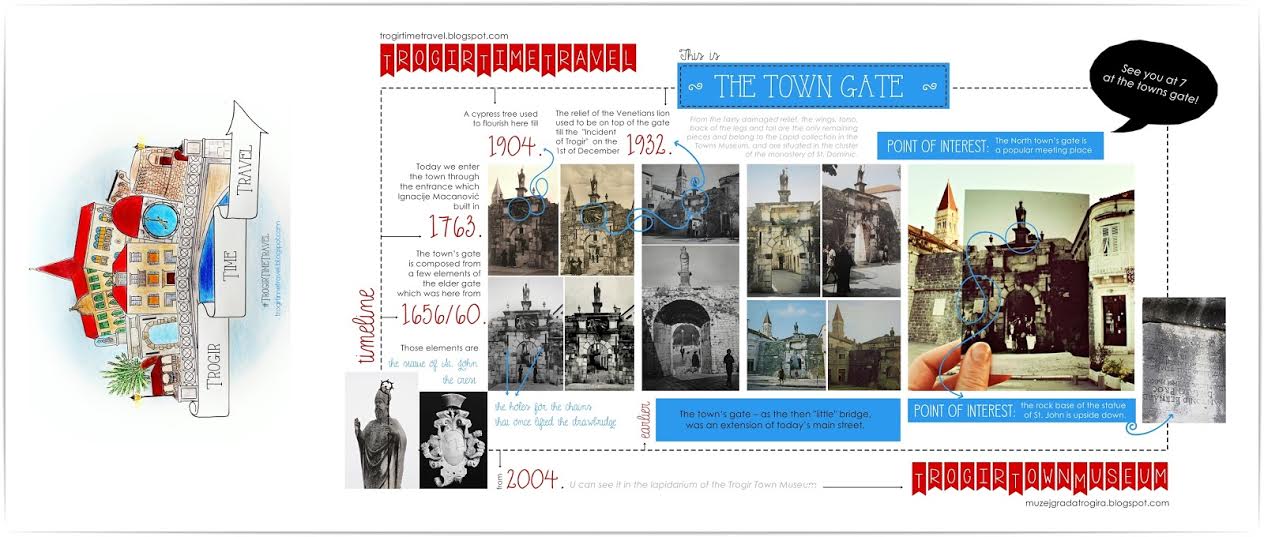
19. Favourite meeting spot – Northern town gates
There is a local saying “Meet you at the town gates at 7”, which shows the northern gates were and still are a favourite meeting spot. The gates have already been on that location since the seventeenth century, and there are still holes for the chains that were used for the lifting of the bridge. Similar to the little bridge close by (the one connecting islet where Trogir is located and the mainland) these town gates were an extension of today's main street. The gates have the statue of St. John and previously had a Venetian lion.

20. Nearby sailing/diving wonders - Krknjaši cove- Blue lagoon
In the close vicinity of Trogir, there are numerous islets and islands worth exploring. As Trogir has a strong nautical base, it is no wonder Trogir is a well-visited sailing destination. One of the recently popular spots for sailing is definitely Krknjaši cove – better known as Blue lagoon. Located on the north-east side of Drvenik island between Krknjaš islets, the Blue Lagoon is located 7 nM from Trogir old town and presents the perfect getaway for swimming and snorkelling which can be reached by boat.

Located only 3 km from Trogir, Pantan mills are the place where fresh water from 12 different sources mix with sea water and form a natural habitat for various bird and fish species. Built in the sixteenth century but first mentioned in three centuries before, they present fortified renaissance mills and the most important building of that kind on the Adriatic coast. The Pantan mills are an especially protected area and the place to go to try local authentic food or even sleep in the old fort.
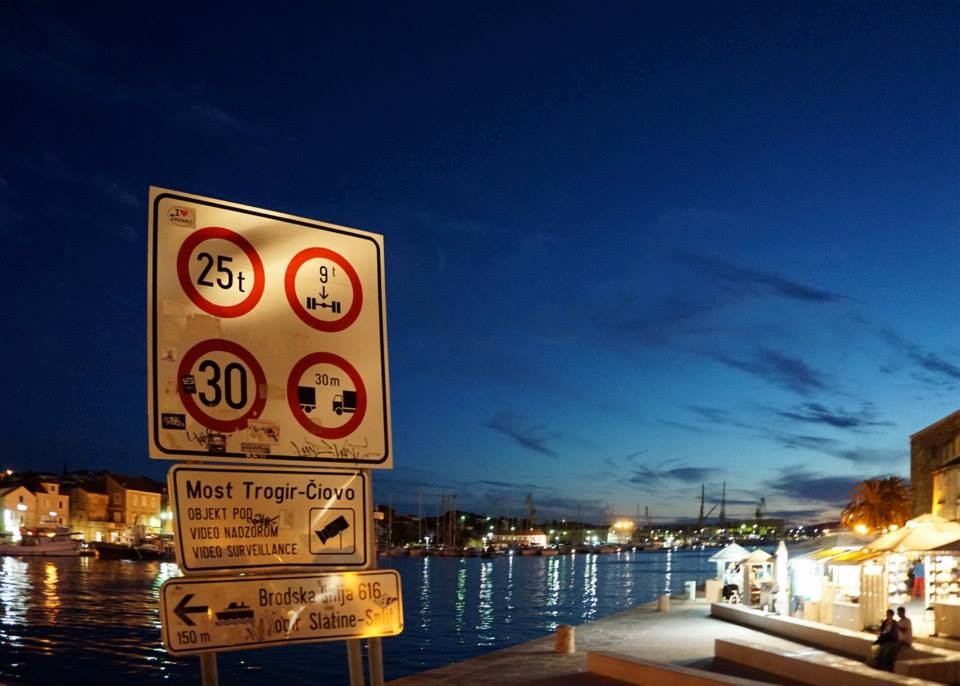
22. The notorious bridge connecting Čiovo
Trogir and Čiovo island are connected with one small moving bridge which gets extremely busy every summer and is the only connection between the island Čiovo and the mainland. This has been the case for years now, and both locals and tourists are very familiar with this issue, which makes the short journey take much longer than expected if you get stuck in traffic. Recently, a new bridge connecting mainland and Čiovo is being constructed and its construction should finish by October 2016. which will make Čiovo much better connected than it is now. Plans for building a better bridge connecting Trogir and Čiovo have been discussed for more than 30 years but the construction finally started last year.

23. Čiovo island
Čiovo island was during history known as the island for plague infected people and refugees. It was intensively inhabited after the Turkish invasions in of the fifteenth and sixteenth centuries. Noble Trogir families never built their summer houses there but the lands of Čiovo were used as a fruitful plain. Nowadays it is known for much nicer reasons – as one of the family vacation summer destinations with a range of beaches and lovely coastal towns. Čiovo is the biggest island in the Trogir archipelago, with tourist hotspots such as Okrug Gornji, Slatine and Arbanija. All these little towns are lovely destinations for vacation and extremely busy in the summer. Čiovo except for its beaches and summer tourism is well known for its 20-kilometre long themed walking and bike paths.

24. Gospa od Prizidnice
Gospa od Prizidnice is a small church built in the mid-sixteenth century on the southern side of Čiovo island. It was a place for prayer for Glagolitic monks and priests. The church has the image of Our Lady of Grace from Crete from the fourteenth century. This sanctuary was linked to sailors as they were in danger from stormy sea – proof of this are various small ships left in the sanctuary.

25. Ljubitovica garlic
Approximately 15 kilometres by air from Trogir there is a small inland village Ljubitovica which is globally recognised as the place for ecological and healthy garlic. The garlic variety grown here is Šarac and that is the name for the local agricultural association formed by 150 families who grow mainly this garlic. Garlic is known as a natural antibiotic and antiseptic. This authentic pale pink/purple variety almost became extinct in the 1990s but it was recently revitalised.
If you want to purchase this authentic garlic go visit Ljubitovica or order online.
Source: Tourist Board Trogir, Trogir City Museum, Trogir Times Travel, Tourist Board Okrug, Romulic and Stojcic, Nikša Smoje, Ana Lekić


